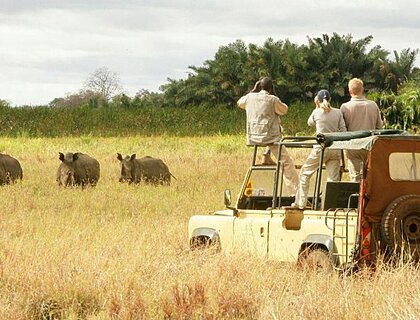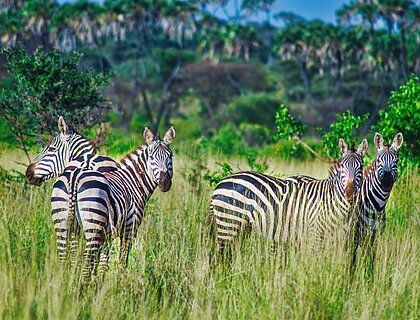Original home of Elsa, the orphaned lioness made famous by George and Joy Adamson and 'Born Free'
Scroll for more
 Meru is wild, beautiful, and still a little off the beaten track – which is exactly why we love it.
Meru is wild, beautiful, and still a little off the beaten track – which is exactly why we love it.
Meru first came to fame as the original home of Elsa, the orphaned lioness reared by George and Joy Adamson before being returned to the wild. You may remember the book and film Born Free? (The Adamsons’ house, where they lived while raising Elsa, still exists in Meru and is sometimes visited on safari.)
But Meru National Park is far more than Elsa’s old hunting grounds. Its real magic lies in its sheer untouched wilderness. While the Masai Mara hums with safari traffic, Meru remains gloriously quiet – you can drive for hours without seeing another vehicle. But Elsa’s descendants still hunt the plentiful plains game, whilst bush babies and hyrax live on Mughwango Hill.
The park’s landscapes are surprisingly varied: from arid plains dotted with baobabs and Doum palms, to lush riverine habitats fed by its thirteen rivers. All with Mount Kenya rising imperially in the distance.
Wildlife thrives here – elephants migrate back in the dry season, lions and giraffes roam the plains, and the Rhino Sanctuary, within Meru, protects around 65 white and black rhino from the ever-present risk of poaching. Birders are equally rewarded with more than 280 recorded species.

For lodges, we recommend the romantic, multi-award-winning Elsa’s Kopje Lodge perched dramatically above the savanna plains, or Offbeat Meru Camp for a more laid-back, authentic safari experience.
Unusual fact: Meru has one of the highest concentrations of rivers of any Kenyan park, making it much greener than you’d expect for its latitude.
What wildlife can I see in Meru National Park?
Elephants, lions, rhino, giraffe, hippo, and over 280 bird species.
When is the best time to visit Meru?
The summer rainfall leads to tall grasses in summer, making game-viewingharder. So we recommend the dry season (June to October) when the grasses are shorter and migrating elephants return, for game-viewing.)
Discover Kenya’s quieter side – let us add Meru National Park to your safari itinerary.
Back to Kenya safari main page.
